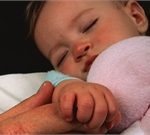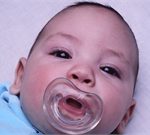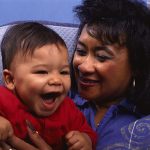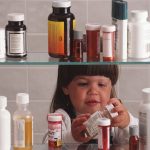Childhood Vaccinations
 There has been much debate about vaccinations over the past 10 years–in the general population. There has been much less controversy in the medical community. The debate and anxiety began with a faulty study linking MMR to autism, and despite the study being shoddy and discredited in many subsequent studies, despite the physician in charge of the study being denied a medical license (the equivalent of being disbarred), the seeds of doubt were planted, the flames of anxiety were fanned by the media and some celebrities, and parents all over have spent an inordinate amount of time thinking about whether or not they trust vaccinations. When it finally came out in mainstream media that MMR did not cause autism, the anti-vaccine crowd began to blame thimerisol & mercury. And when those were taken out of vaccines, autism rates still rose, but the vaccine fear was too deeply seeded to disappear.
There has been much debate about vaccinations over the past 10 years–in the general population. There has been much less controversy in the medical community. The debate and anxiety began with a faulty study linking MMR to autism, and despite the study being shoddy and discredited in many subsequent studies, despite the physician in charge of the study being denied a medical license (the equivalent of being disbarred), the seeds of doubt were planted, the flames of anxiety were fanned by the media and some celebrities, and parents all over have spent an inordinate amount of time thinking about whether or not they trust vaccinations. When it finally came out in mainstream media that MMR did not cause autism, the anti-vaccine crowd began to blame thimerisol & mercury. And when those were taken out of vaccines, autism rates still rose, but the vaccine fear was too deeply seeded to disappear.
Vaccines are the most powerful weapons available in our medical arsenal to keep children healthy. The purpose of a vaccine is to prevent illness in a vulnerable population. Most commonly the vulnerable are infants and the elderly. A vaccine shows the body what the enemy looks like so that reserves for fighting it, should the body see it again, are built up and stored. This allows the body to fight that illness, if ever exposed, on day number one, before the illness takes hold, instead of on day five, six or seven, when the illness might already have gotten out of control. The vaccine schedule is based on years of studies and data gathered on millions of children over those many years.
The irony in all of this is that it is the success of vaccines that has led to some of the controversy and vaccine refusal we now see. Because parents do not personally know families who have lost children to H. Influenza B and Pneumococcal Meningitis, and do not see children paralyzed by Polio, they feel that there is no risk and no point in vaccinating. The reluctance to vaccinate has led to outbreaks, in recent years, of Measles, Mumps and Pertussis (whooping cough) – to name a few – leading to hospitalizations and deaths in otherwise healthy children and infants.
If you would like to read more about vaccinations from websites not related to single cases/parent anecdotes or governmental studies, you can go to:
www.vaccineinformation.org or www.vaccine.chop.edu.
The Routine Childhood Vaccines
DTaP –Diptheria, Tetanus and Pertussis (whooping cough)
IPV – Polio
Hib– Haemophilus Influenza B (Until this vaccine became available Hib was the leading cause of meningitis, pneumonia and epiglottitis-swelling of the throat-often leading to death-in children under 2 years of age)
Pneumococcal Conjugate Vaccine – Pneumococcus (Until this vaccine was available pneumococcus was the 2nd leading cause of meningitis and pneumonia in children under 2 years of age)
Rotavirus –stomach flu–The leading cause of stomach flu leading to dehydration and hospitalization of children, primarily in infants under 1 year of age.
Hepatitis B – Hepatitis is a disease that causes liver disease and liver failure. This type of hepatitis is transmitted through blood and/or sex.
Hepatitis A – This type of hepatitis is transmitted from hand to mouth – so is most commonly seen in toddlers because of their tendency to put everything into their mouths. As with Hepatitis B, Hepatitis A may lead to liver disease and failure.
MMR – Measles, Mumps & Rubella (German Measles) – All three are viral infections with varying symptoms. Complications are not common, but some examples of complications for each include: Mumps– hearing loss, sterility (inability to father children) in boys, meningitis, pancreatitis, miscarriage in early pregnancy. Measles – pneumonia, encephalitis (brain inflammation), blood clotting problems, death. Rubella– if not immune by pregnancy and exposed this virus can cause severe birth defects in the developing baby including deafness, heart defects and mental retardation.
Varicella – Before this vaccine chicken pox led to 11,000 hospitalizations and 50-100 deaths per year in the United States.
Meningococcus – Bacterial meningitis- this type is most commonly seen in adolescents and young adults.
HPV –Human Papilloma Virus (Brand name – Gardisil)– Protects against 2 types of HPV that cause 75% of cervical cancer cases, 70% of vaginal cancer cases, and two types of HPV that cause 90% of genital warts cases.
Influenza – Each year a new combination vaccine is used- comprised of what the three most likely strains of flu that year will be. Influenza has lead to epidemics of deaths due to pneumonia in both vulnerable and healthy people.
The AAP (American Academy of Pediatrics) recommended vaccine schedule for healthy children:
0-1 months: Hepatitis B #1
2 months: DTaP/Hib/IPV, Pneumococcus, Hepatitis B, Rotavirus
4 months: DTaP/Hib/IPV, Pneumococcus, Hepatitis B (if Hepatitis B#1 was given at 2 months and not 0-1 month), Rotavirus
6 months: DTaP/Hib/IPV, Pneumococcus, Rotavirus, Influenza (before/during flu season)
7 months: Influenza #2 (if flu season)
9 months: Hepatitis B
12 months: Varicella, MMR, Hepatitis A
15 months: DTaP, Hib
18 months: Pneumococcus, Hepatitis A
4-6 Years old: MMR, Varicella, DTaP, IPV
2-11 Years old: Meningococcus
9-11 Years old: DTaP (Tetanus/Whooping cough boosters should be given every 5-10 years)
9-16 Years old: HPV (3 vaccines in total over 6-12 months)
In our office we do offer to split the vaccines for parents who are, despite the lack of medical evidence, concerned about vaccinations. An example of splitting vaccines would be:
2 months: DTaP/Hib/IPV, Rotavirus
3 months: Pneumococcus, Hepatitis B
Etc.
There is no medical reasoning behind this. But if an infant is not traveling and we do not feel s/he is at high risk, the option is available for anxious families. Talk to your own Pediatrician to see what the options are in his/her office. And remember, aside from you and your family, the people who probably most want to see your children live long healthy lives are your children’s Pediatricians. We’re all on the same team!
-Monique Araya, MD, FAAP
The medical information on this Web site is provided for educational purposes only. The information provided in this site, or through linkages to other sites, is not a substitute for medical or professional care, and you should not use the information in place of a visit, call consultation or the advice of your physician or other healthcare provider.
If you believe you have a medical emergency you should call 911 or your physician immediately. If you have any questions regarding your health or a medical condition, you should promptly consult your physician.
- Beautiful Smiles are Forever
- Bed Wetting / Nocturnal Enuresis
- Childhood Obesity
- Childhood Vaccinations
- Circumcision
- Diet and Vitamins During Pregnancy
- Exercise and Weight Gain During Pregnancy
- How to Choose a Pediatrician
- Infections – Hard to Avoid?
- Introducing Solids
- Pediatric Dentistry Q & A
- Sex and Pregnancy
- Toilet Training
- Your Child’s Development
 High Viral Loads Make Kids ‘Silent Spreaders’ of COVID-19
High Viral Loads Make Kids ‘Silent Spreaders’ of COVID-19 Clotting Tied to COVID-19 May Harm the Placenta
Clotting Tied to COVID-19 May Harm the Placenta ‘Kangaroo Care’ Has Big Health Benefits For Preemies
‘Kangaroo Care’ Has Big Health Benefits For Preemies Babies Are Spared Severe COVID-19 Symptoms
Babies Are Spared Severe COVID-19 Symptoms Sleepless Babies May Face Emotional Troubles as Kids
Sleepless Babies May Face Emotional Troubles as Kids Secrets to Soothing a Cranky Baby Safely
Secrets to Soothing a Cranky Baby Safely How to Protect Your Baby Against Eczema
How to Protect Your Baby Against Eczema How to Protect Your Baby From Unsafe Products
How to Protect Your Baby From Unsafe Products How to Soothe Baby’s Teething Pain Safely
How to Soothe Baby’s Teething Pain Safely How to Protect Your Child From Choking
How to Protect Your Child From Choking How to Tame Morning Chaos
How to Tame Morning Chaos Nearly 700,000 Infant Rocking Sleepers Recalled Due to Infant Deaths
Nearly 700,000 Infant Rocking Sleepers Recalled Due to Infant Deaths How Much Does Your Kid Weigh? Chances Are, You’re Underestimating
How Much Does Your Kid Weigh? Chances Are, You’re Underestimating When You Go From a Family of 3 to a Family of 4
When You Go From a Family of 3 to a Family of 4 Bringing Baby in a Lyft, Uber? Child Car Seats Are Rarely Included
Bringing Baby in a Lyft, Uber? Child Car Seats Are Rarely Included Experts Sound Warning About ‘Baby Boxes’
Experts Sound Warning About ‘Baby Boxes’ A-C-T to Prevent Hot Car Tragedies
A-C-T to Prevent Hot Car Tragedies Smart Steps for a Safe Nursery
Smart Steps for a Safe Nursery More Than 1 Day of First-Trimester Bleeding Ups Odds for Smaller Baby
More Than 1 Day of First-Trimester Bleeding Ups Odds for Smaller Baby Rear-Facing Car Seats Protect Tots in Crashes From Behind: Study
Rear-Facing Car Seats Protect Tots in Crashes From Behind: Study Baby Sitters, Relatives Often Unaware of SIDS Risk
Baby Sitters, Relatives Often Unaware of SIDS Risk Window Blinds: A Silent Killer in Your Home
Window Blinds: A Silent Killer in Your Home Babies Start Connecting Words Early On
Babies Start Connecting Words Early On Parents Getting Better at Using Car Seats Safely
Parents Getting Better at Using Car Seats Safely Too Many Babies Still Placed on Stomach to Sleep: Study
Too Many Babies Still Placed on Stomach to Sleep: Study Time for Some Summer Sun Safety Tips
Time for Some Summer Sun Safety Tips Can Sharing Your Bedroom With Baby Come With Risks?
Can Sharing Your Bedroom With Baby Come With Risks? Hospital ‘Baby Boxes’ May Help Prevent SIDS in Newborns
Hospital ‘Baby Boxes’ May Help Prevent SIDS in Newborns Fewer SIDS Deaths in U.S., But Gaps Among Racial Groups Remain
Fewer SIDS Deaths in U.S., But Gaps Among Racial Groups Remain How to Protect Your Child From Accidental Poisoning
How to Protect Your Child From Accidental Poisoning